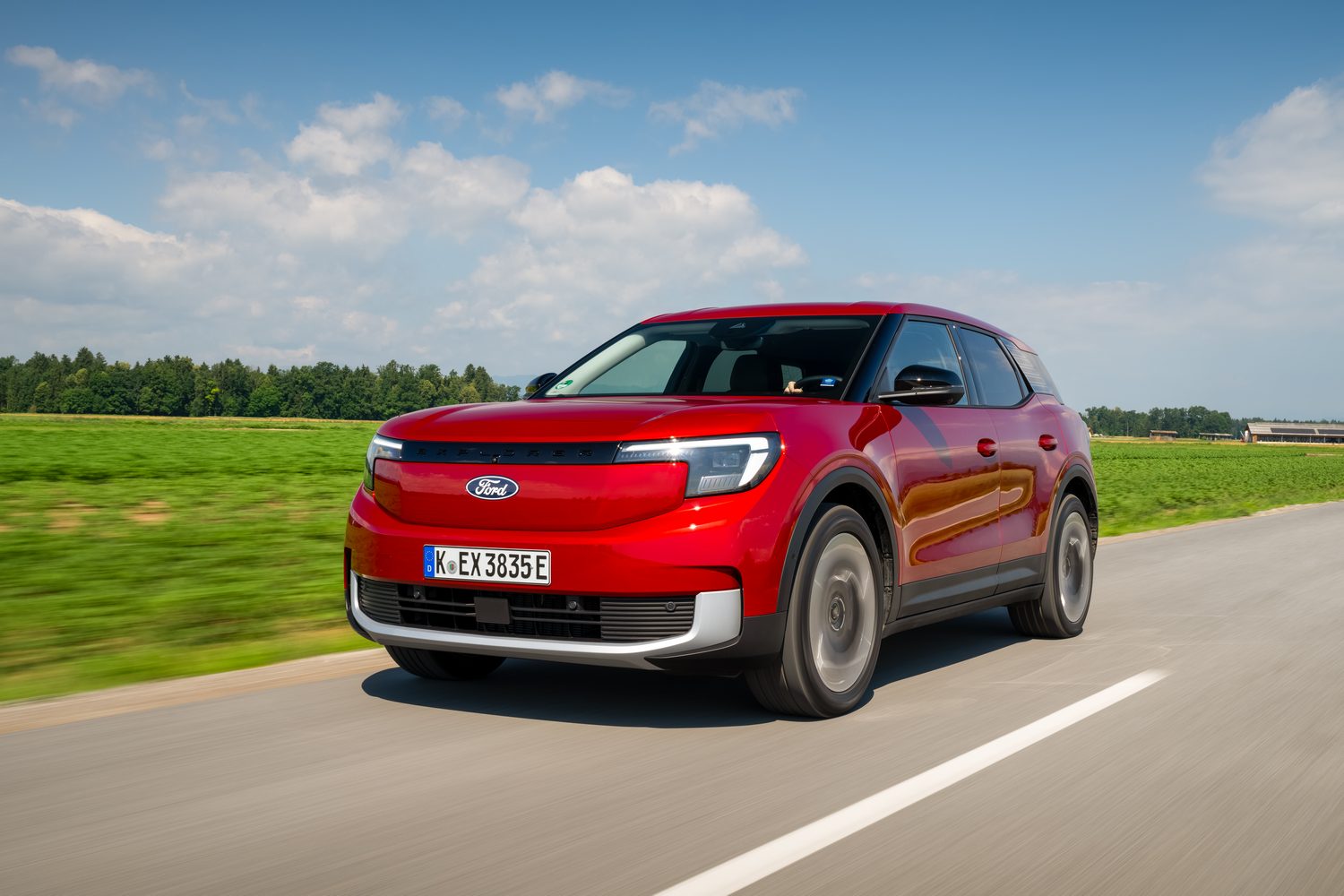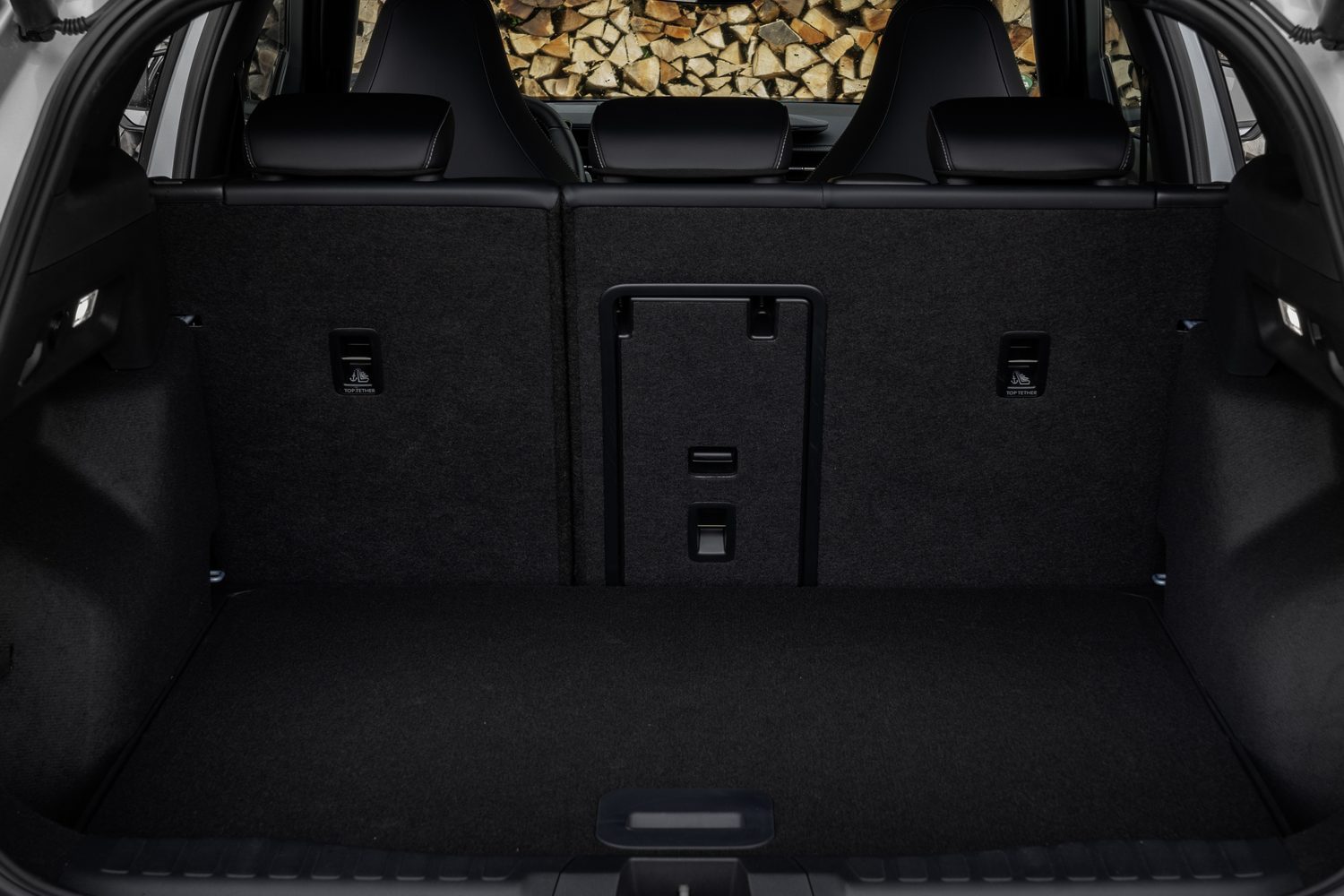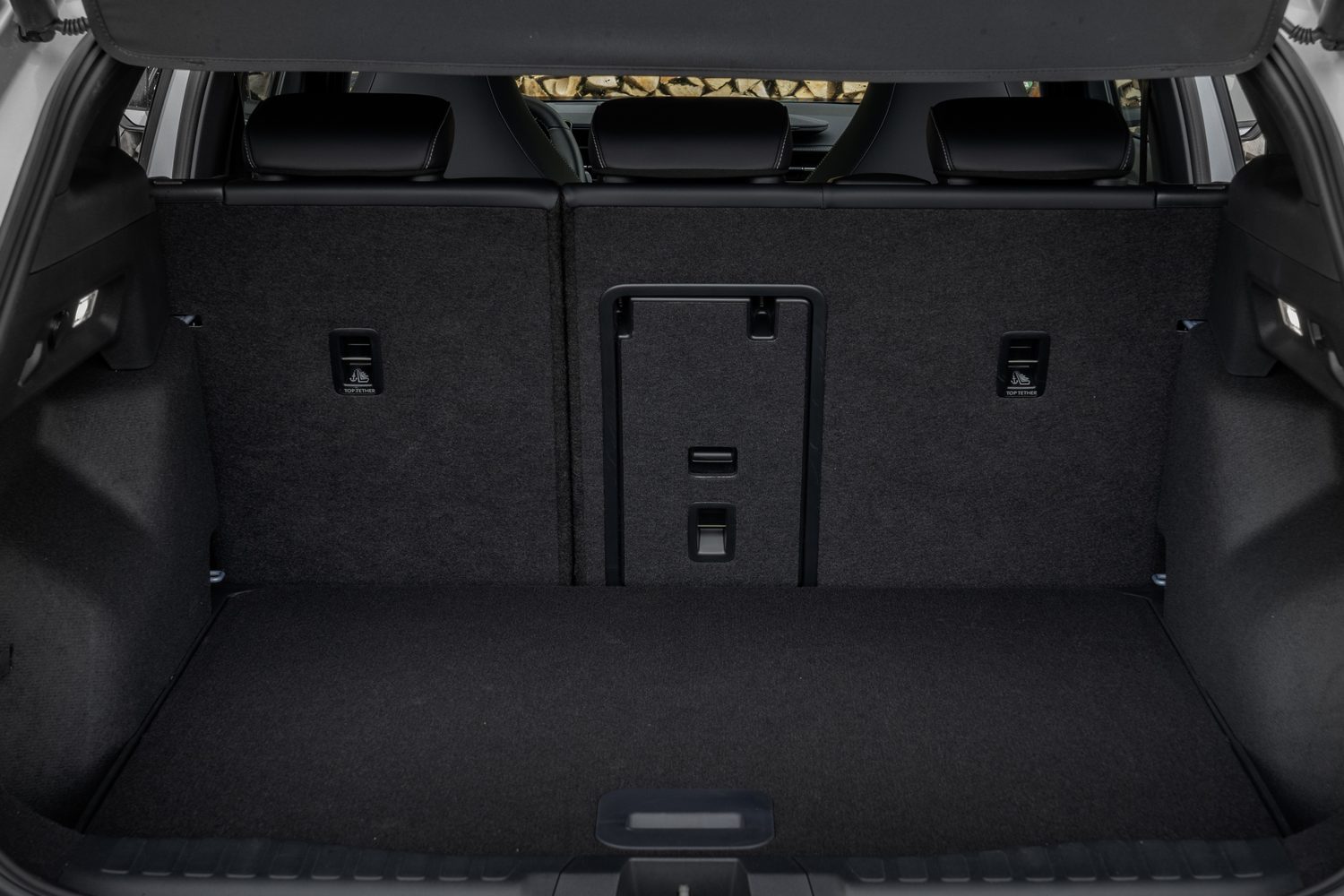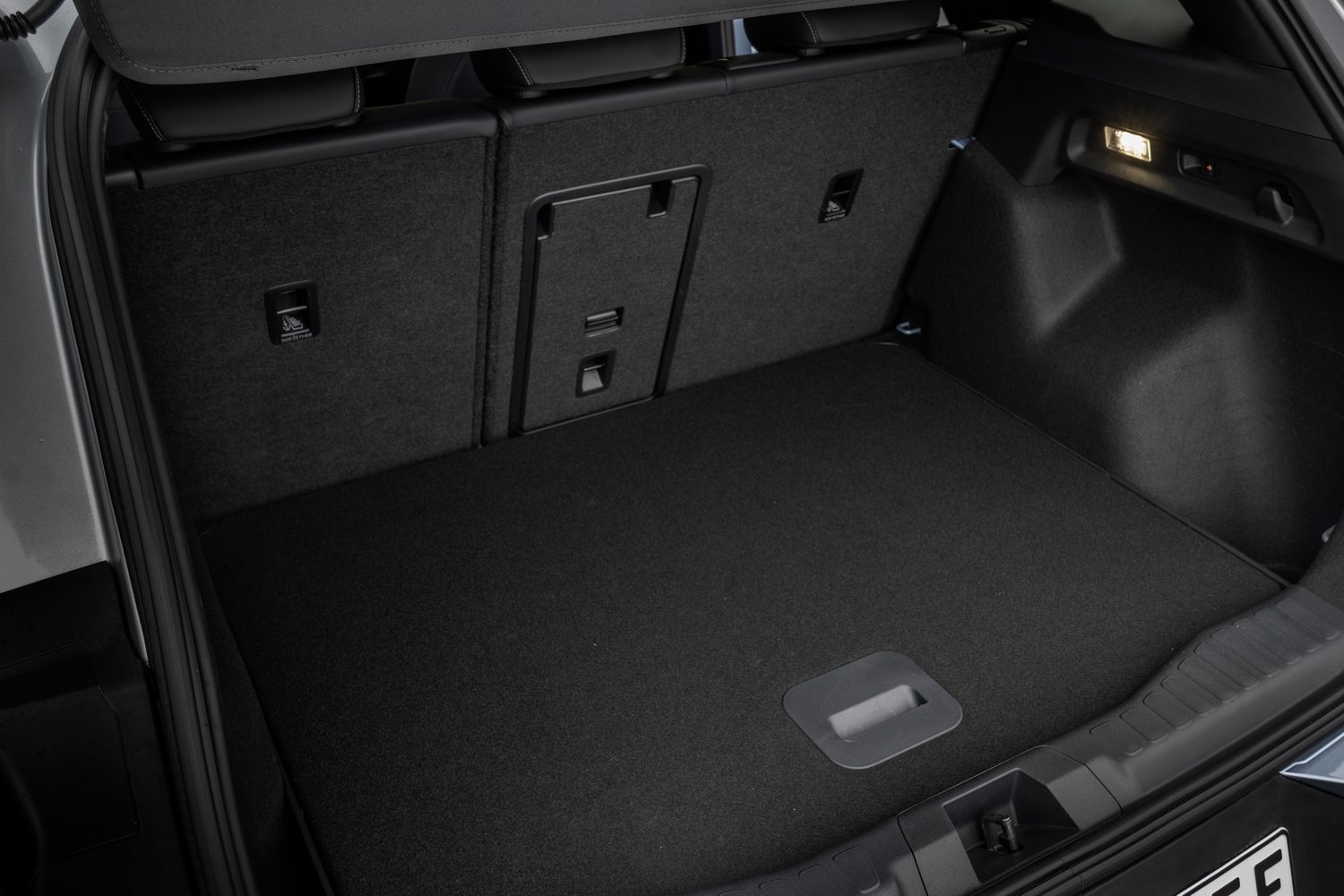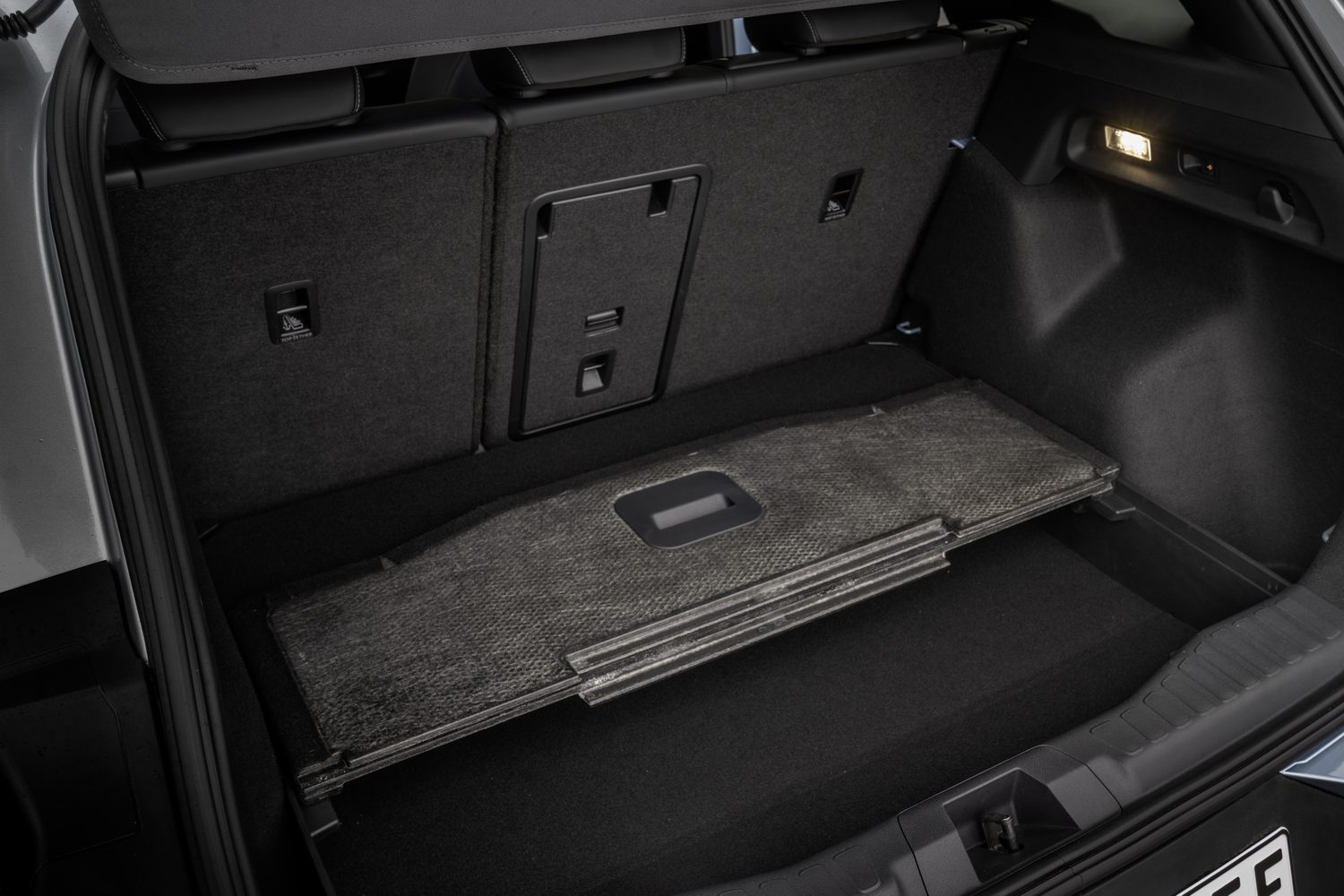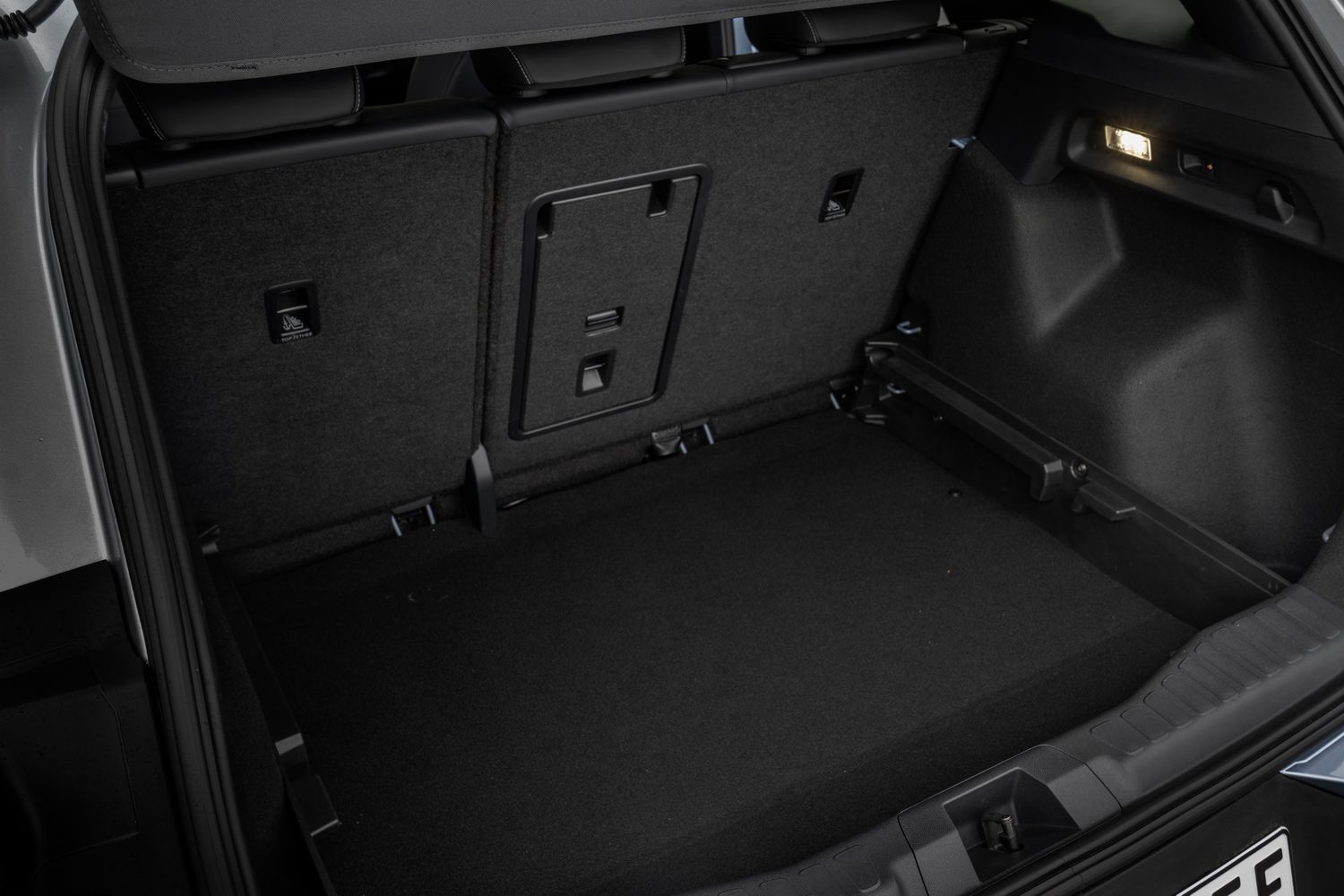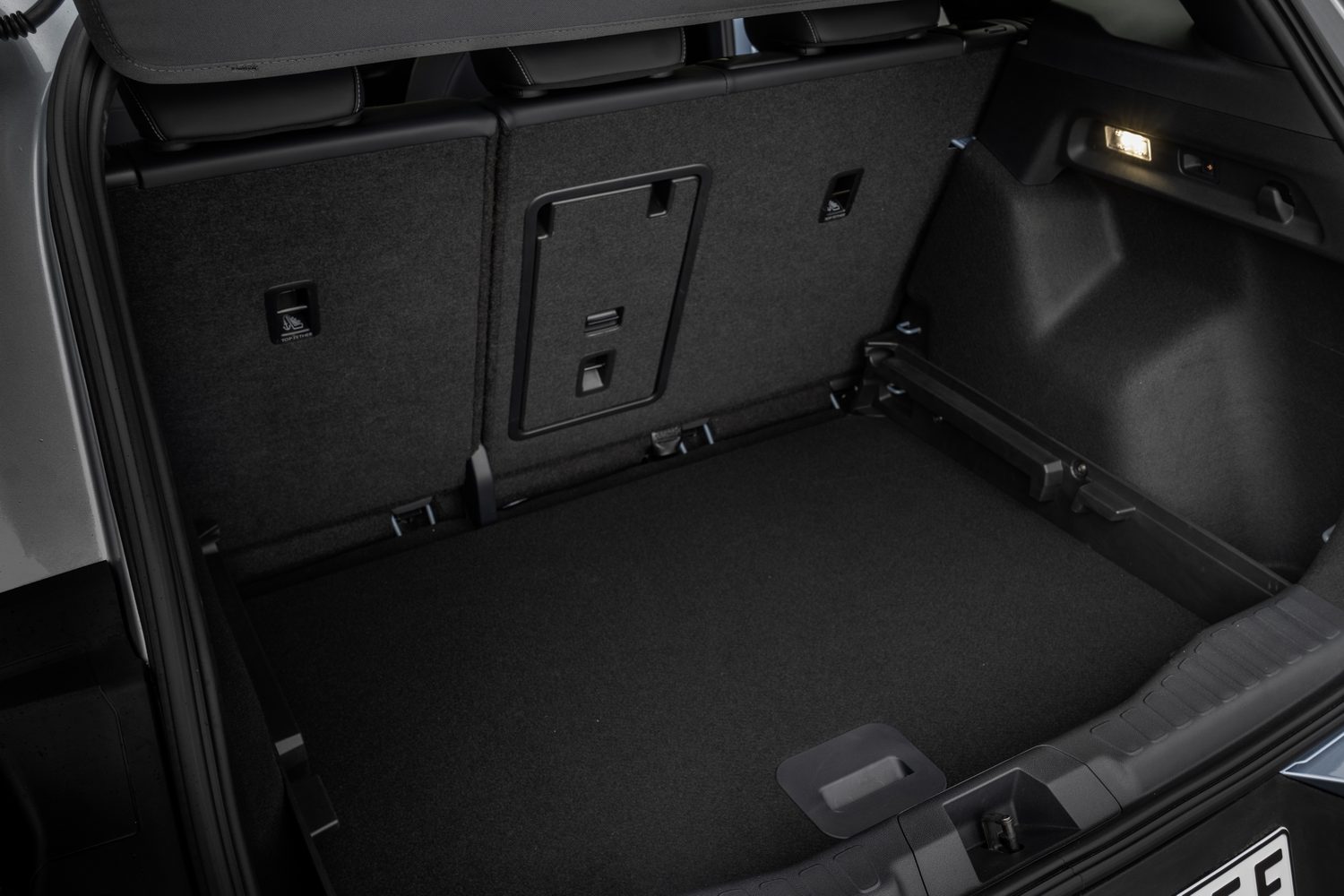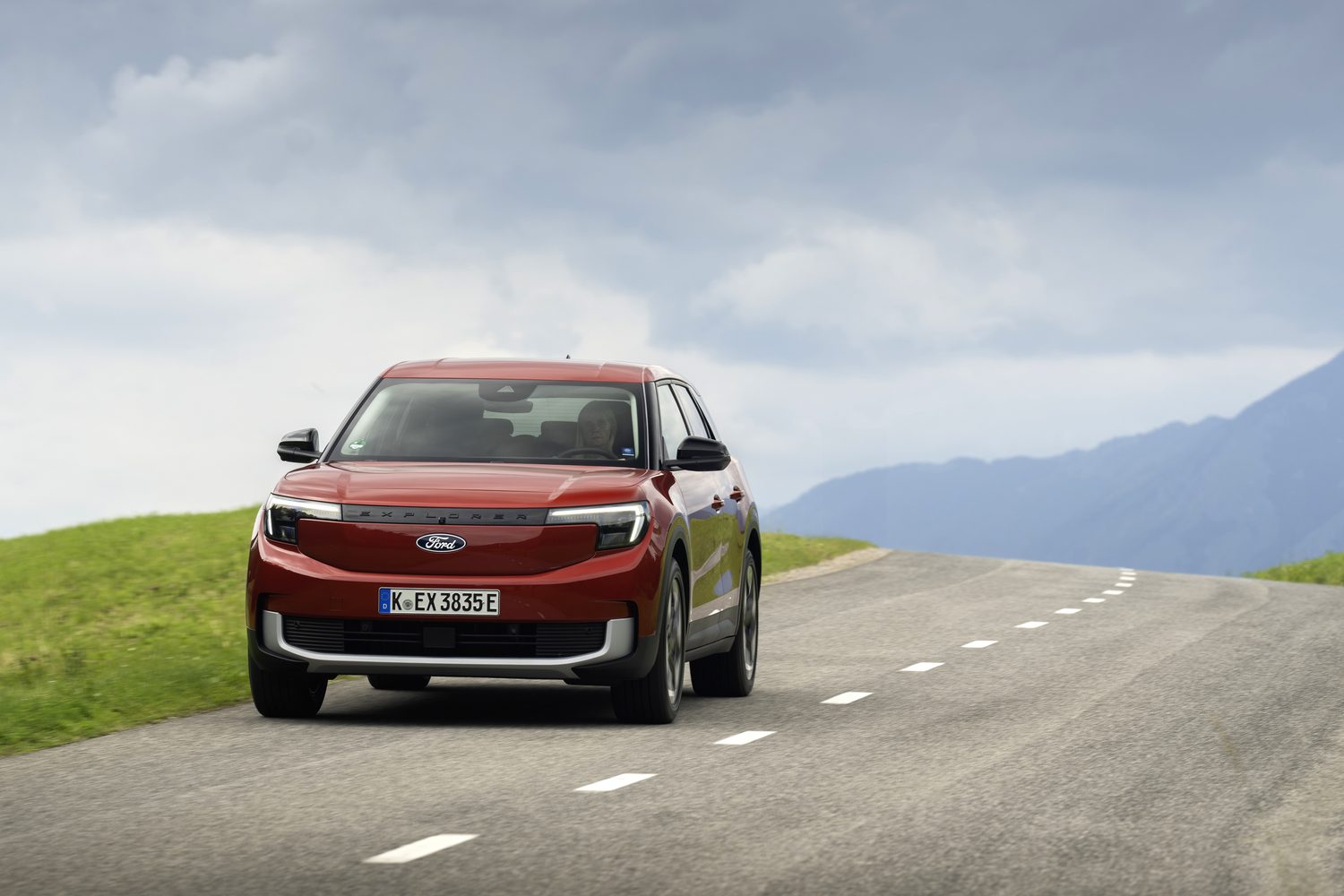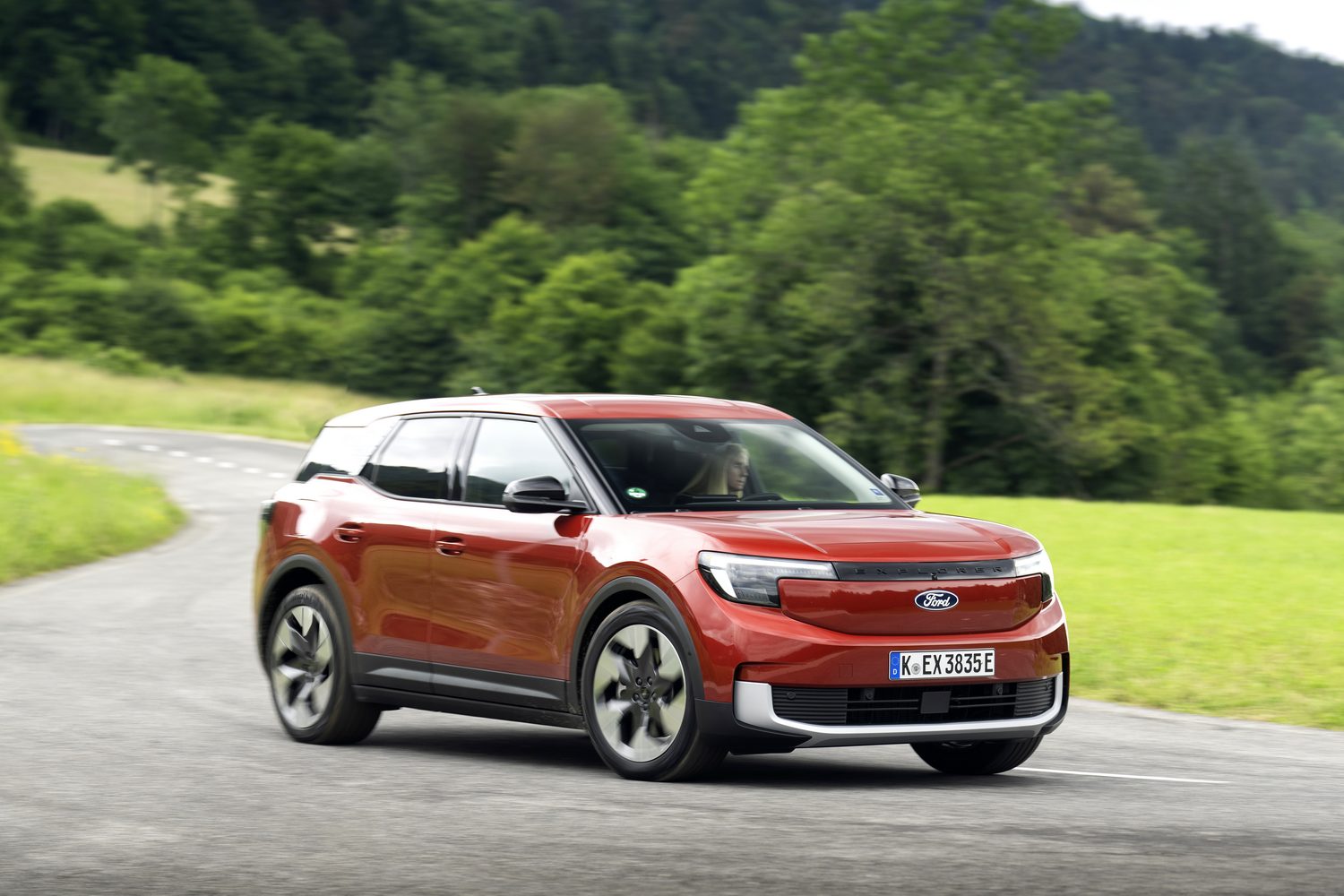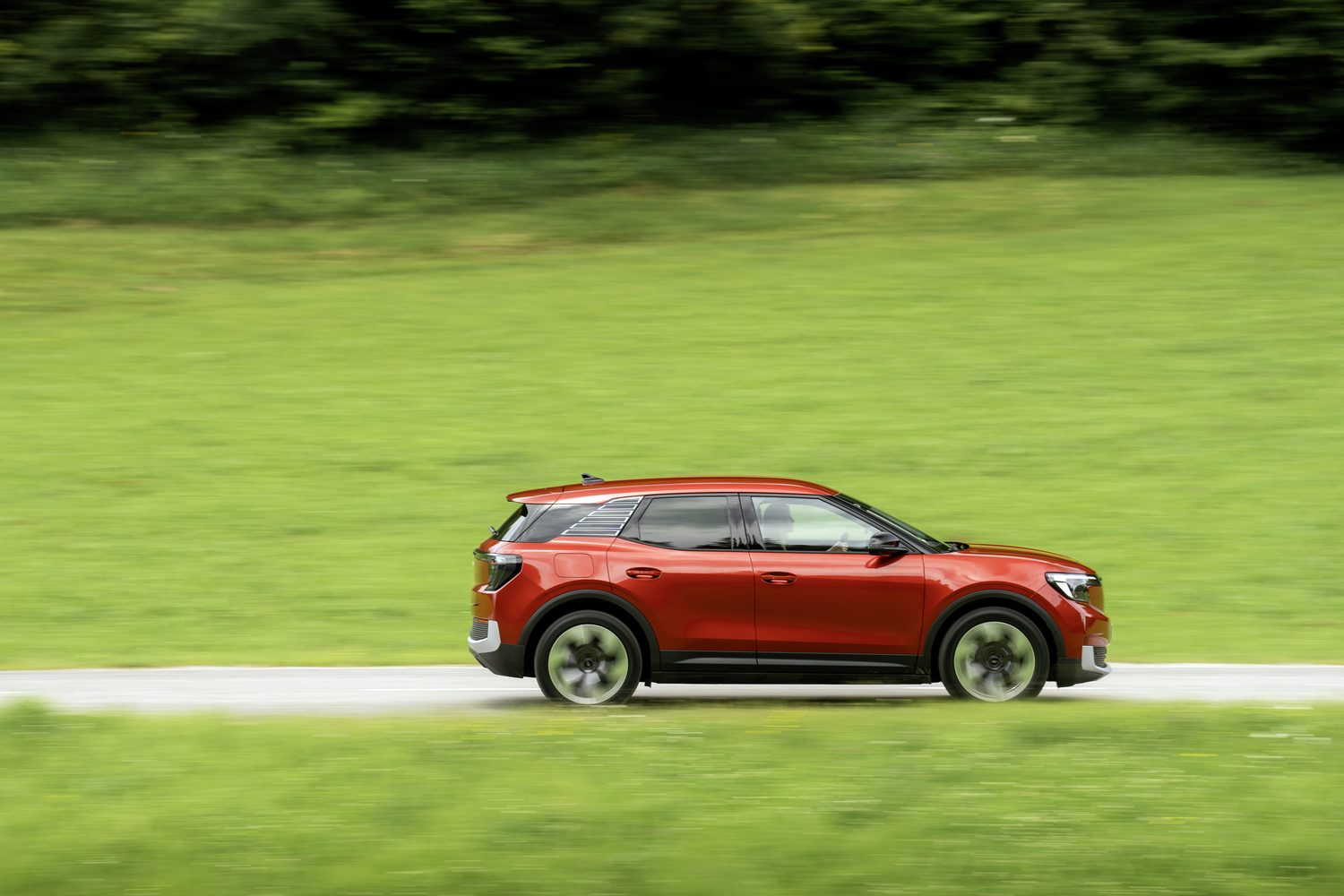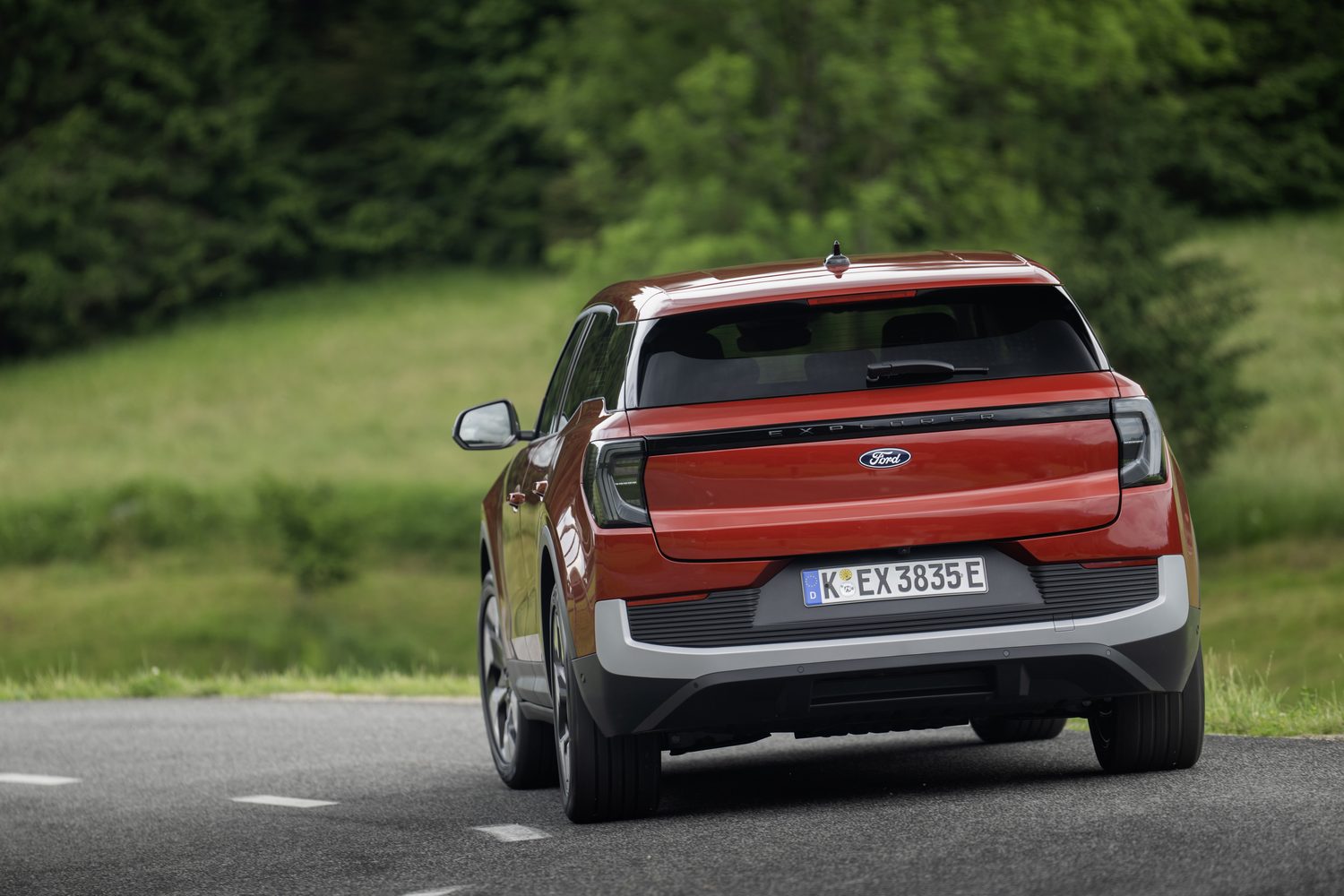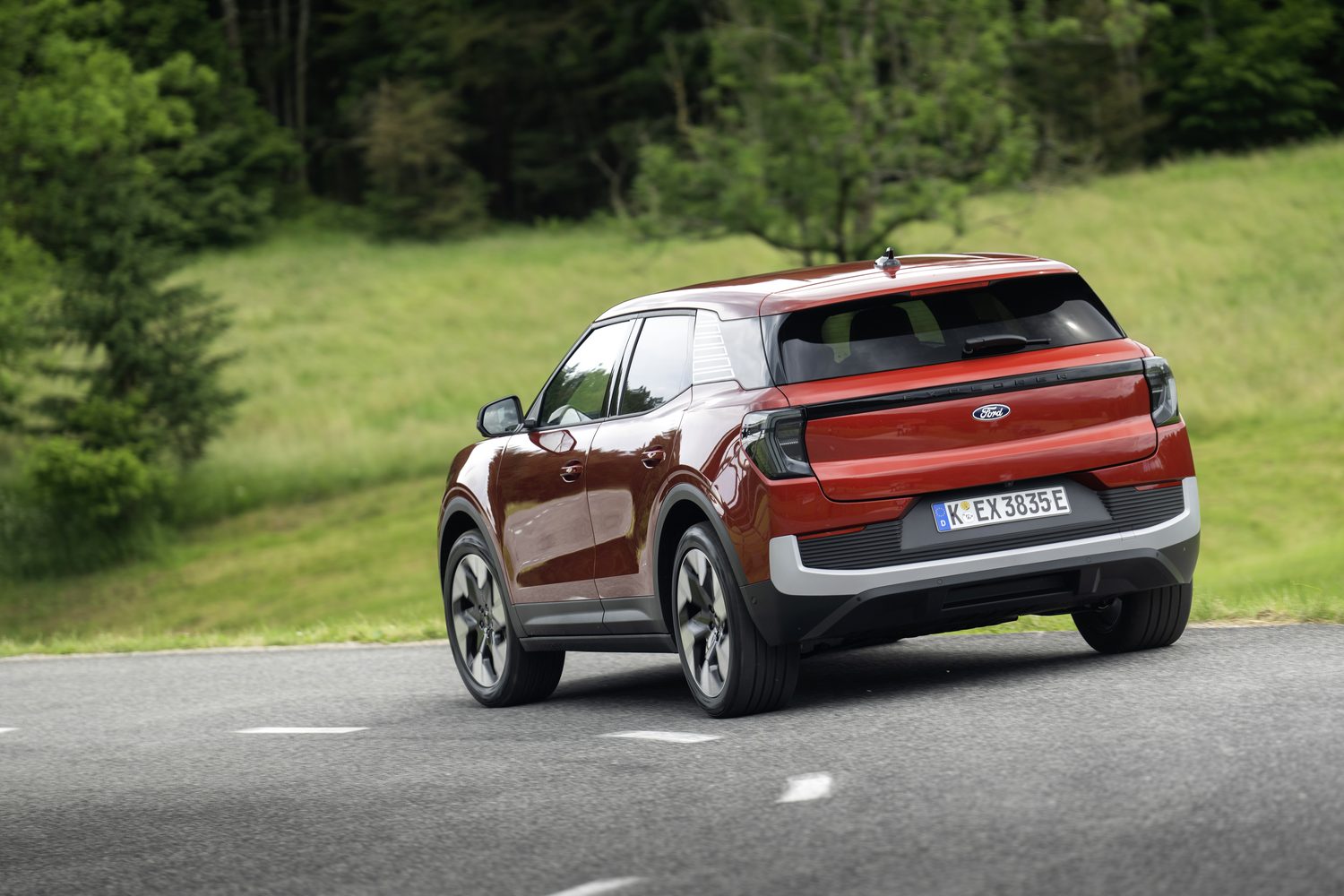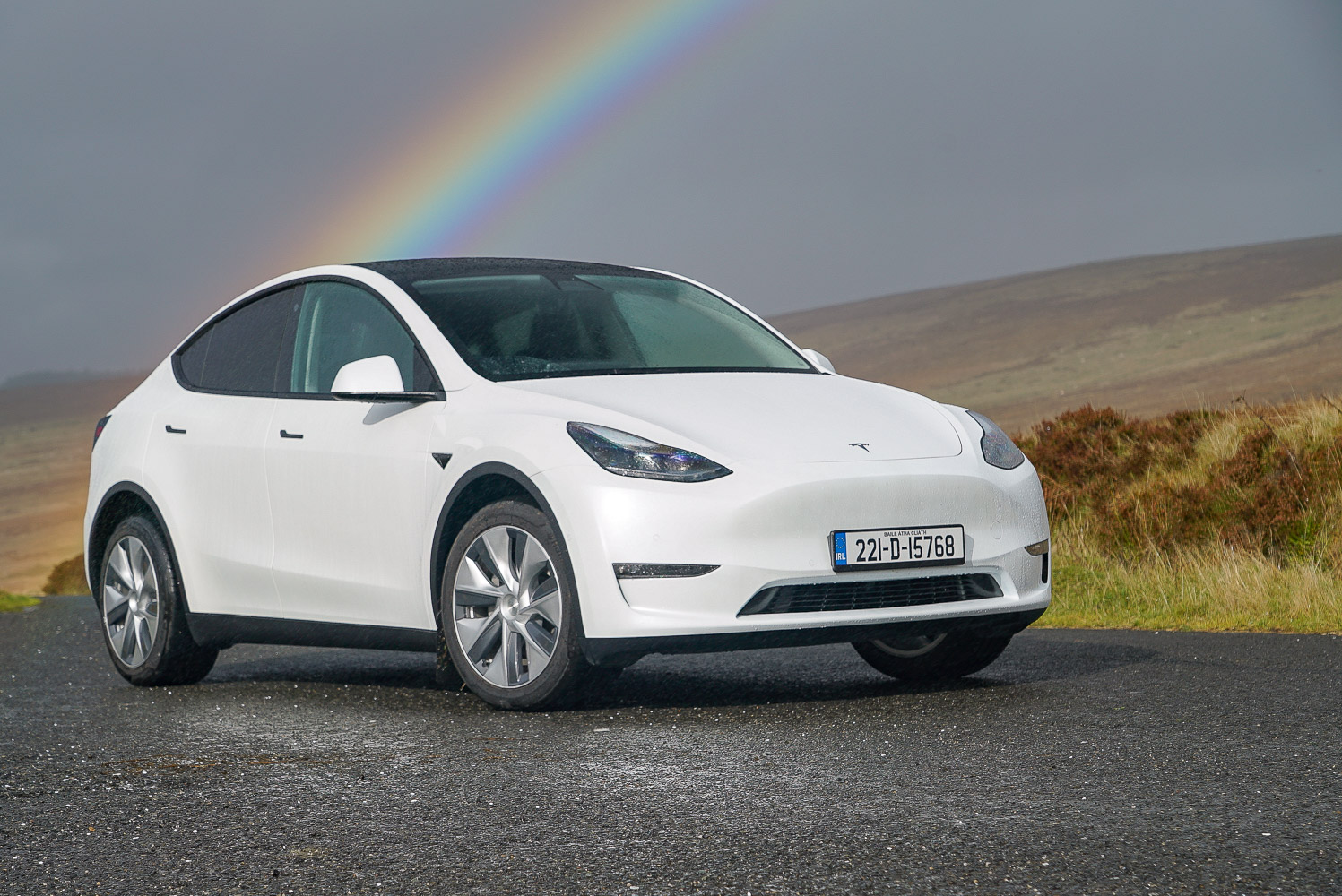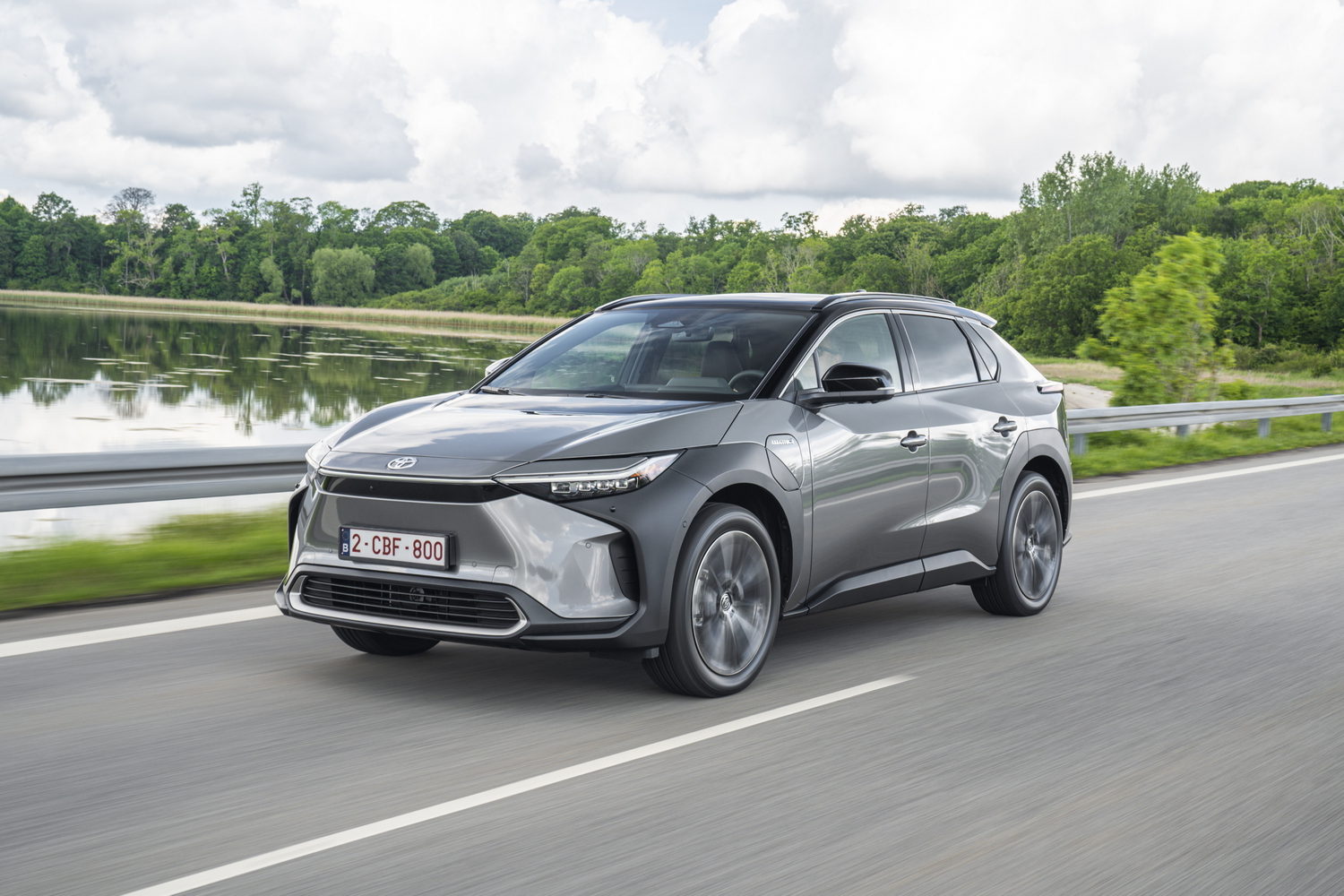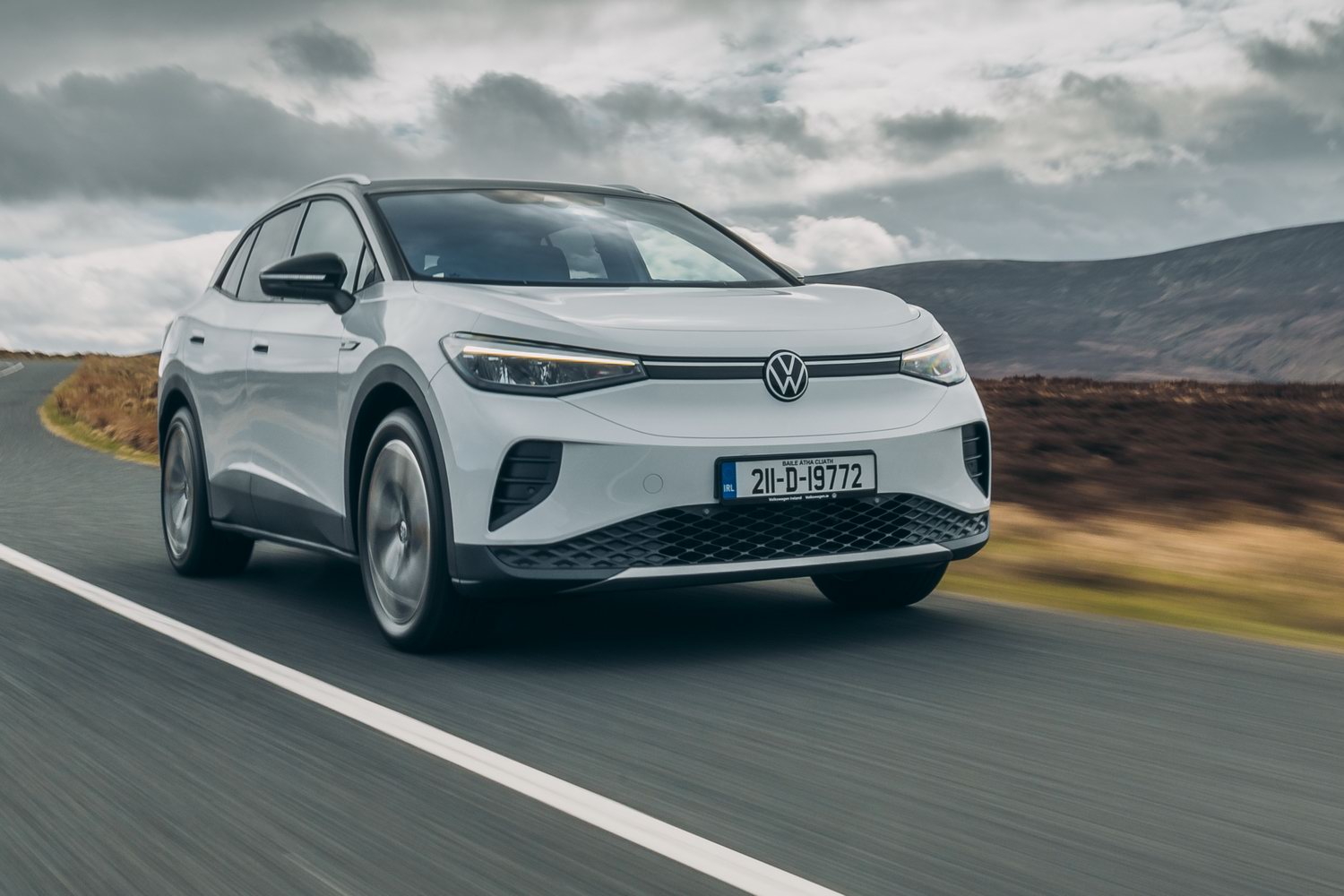Until now, if you were a European Ford customer wanting an electric car, your only option was the costly Ford Mustang Mach-E. Now, the range of options is expanding with the arrival of the Explorer, a smaller mid-size SUV that fits into one of the most popular - but also one of the most competitive - segments of the market.
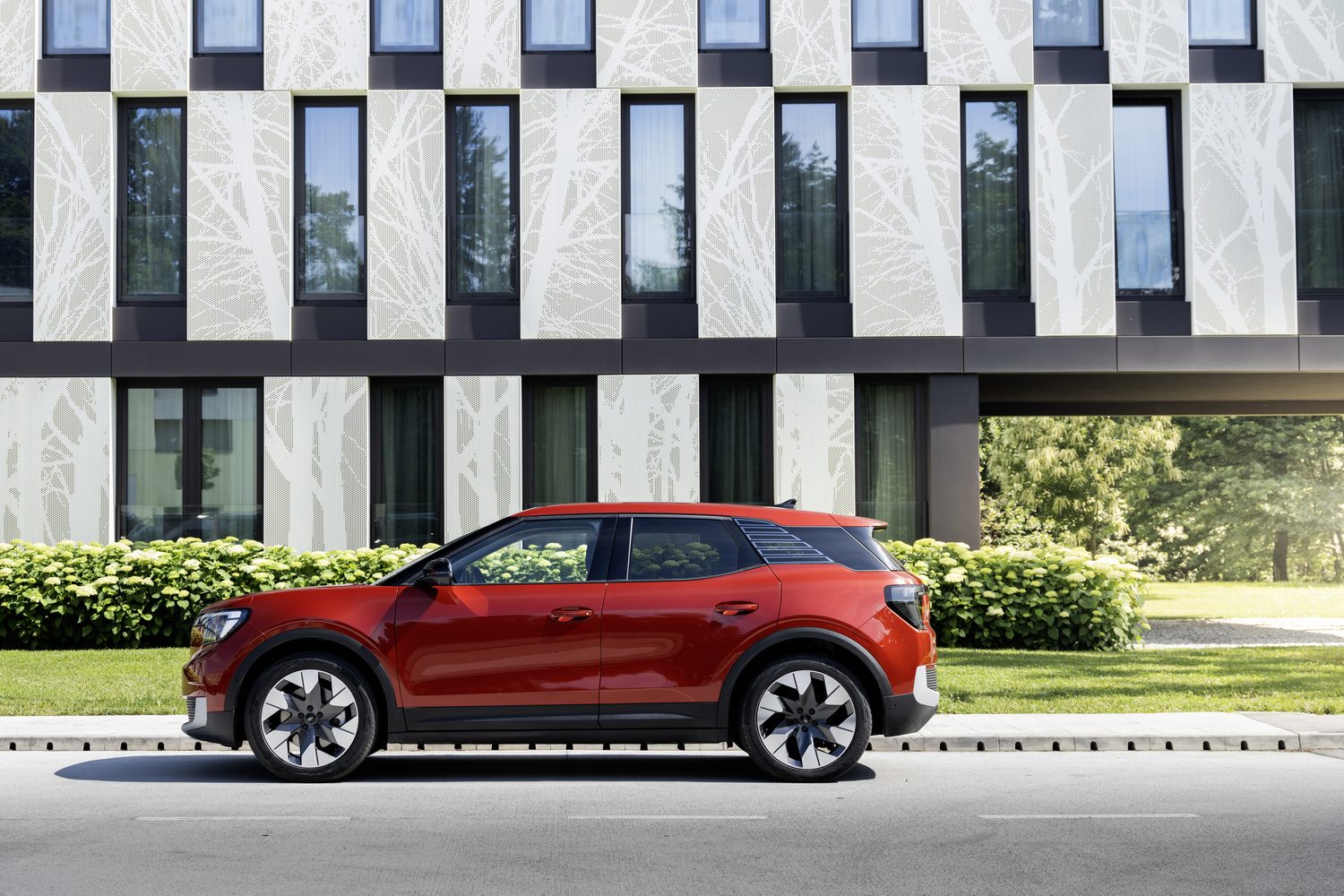
The Ford Explorer is available from launch with the choice of a single-motor, rear-wheel-drive setup or a dual-motor layout for all-wheel drive. A smaller battery will be added to the range in time to achieve a lower entry price point. We drove the single-motor version at the car’s European launch in Slovenia, over a wide variety of roads.
How much is the Ford Explorer in Ireland?
Irish pricing for the Ford Explorer starts at €45,490, including the SEAI EV grant, but subject to delivery charges. That gets you the 77kWh battery in Select specification, which includes 19-inch alloy wheels, LED headlights, a seven-speaker sound system with a soundbar on the dashboard, electrically adjustable driver’s seats, rear privacy glass, keyless entry and start, the 5.3-inch digital instrument display and 14.6-inch touchscreen.
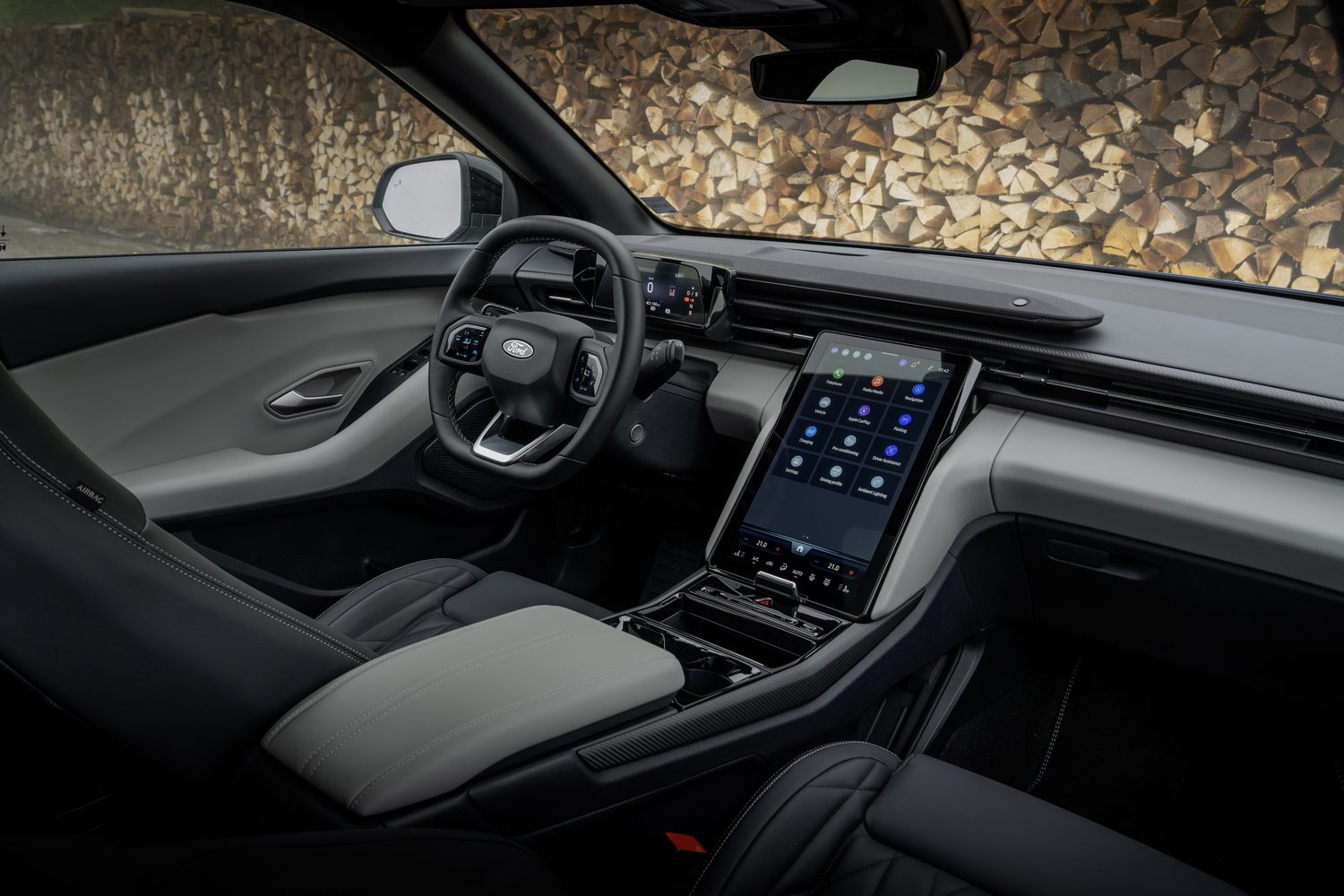
Several driver assistance systems are included with the Explorer Select, including adaptive cruise control, Land Keeping Aid and Lane Departure Warning, Cross Traffic Alert with Active Braking and Exit Warning, front and rear parking sensors, and a reversing camera.
The Ford Explorer Premium is the higher specification grade, and in Ireland has a starting price of €48,490 including the SEAI EV grant, but again is subject to additional delivery charges. This specification includes 20-inch alloy wheels, Matrix LED headlights, a B&O 10-speaker sound system, LED ambient lighting, a panoramic glass roof and an electrically operated tailgate. Other standard items include heated front seats with massage function, electric adjustment for the driver’s seat and dual-zone automatic climate control.
One option you may wish to add to the Ford Explorer is the heat pump, which improves efficiency. It costs €1,167 even on the higher Premium specification.
Towards the end of 2024, Ford will add the smaller 52kWh battery option to the Explorer range. In Select trim, it will cost €44,490, again inclusive of the SEAI EV grant and excluding delivery charges.
What’s the electric range of the Ford Explorer?
From launch, the Explorer will initially be available with a 77kWh battery (that’s the usable capacity) with an official range of 602 kilometres for the Select specification. If you choose the higher-spec Premium version, that range figure drops slightly to 570 kilometres. Ford refers to this battery as the Extended Range version.
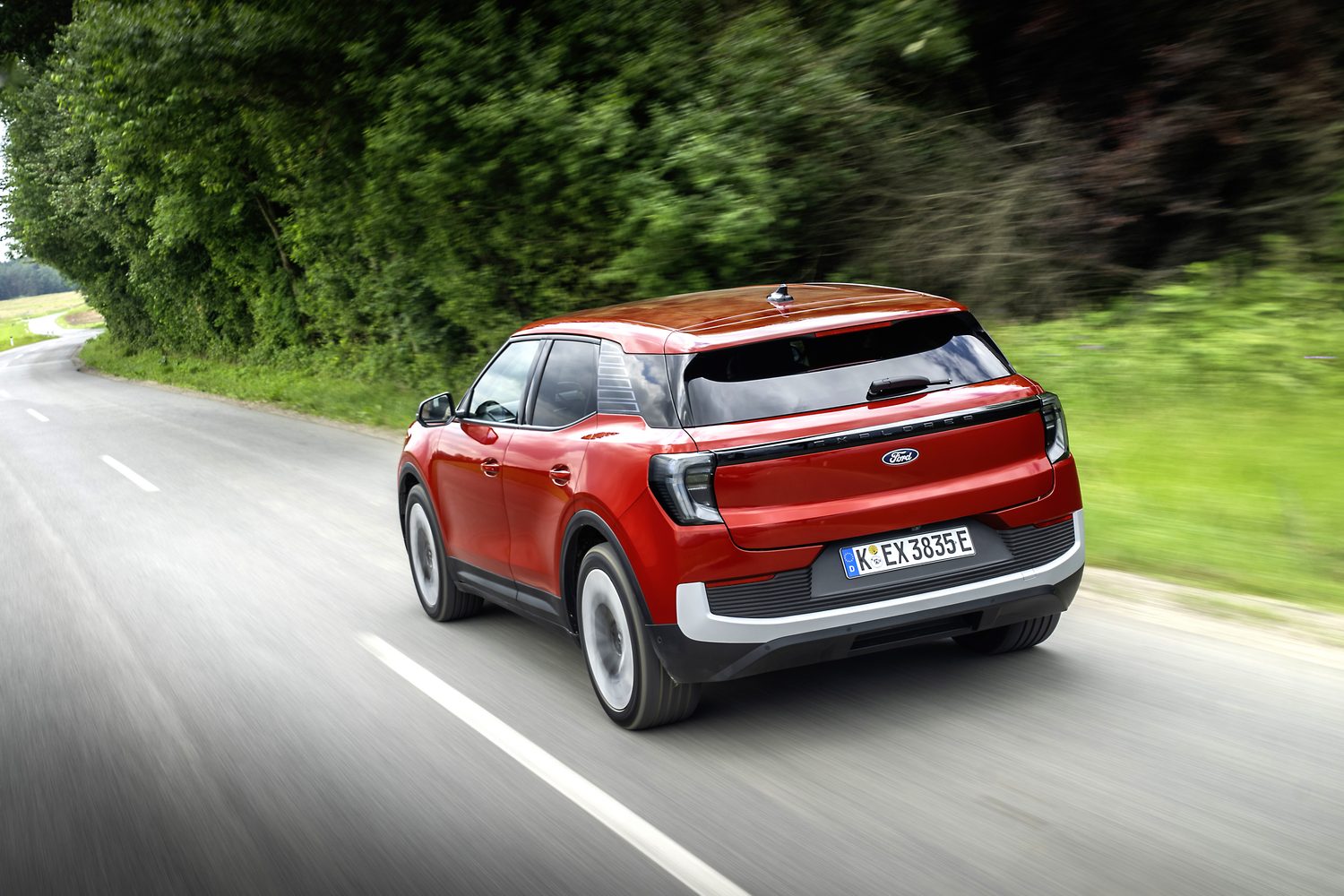
The Standard Range model will use the 52kWh battery, which is enough for 384 kilometres of range in the Select specification. Currently, Ford does not list an option for the Premium specification with this battery.
When it comes to charging, the smaller battery will be capable of a maximum DC charging rate of 125kW, which is sufficient to complete a 10 to 80 per cent recharge in 28 minutes. Ford states the same charging time for its larger battery, as, along with its increased capacity, it gets a 135kW peak DC charge rate. The Explorer gets 11kW AC charging as standard.
A look inside the Ford Explorer
There are a few clever features at work inside the Explorer, but not all are immediately obvious. Starting with the driving position, there’s a good amount of adjustment for the seat and the steering wheel. The latter is adjustable for reach and rake, so drivers of all heights can find a comfortable setup. You also get an electrically adjustable driver’s seat, which is useful, though front-seat passengers must make do with a manually adjustable one.
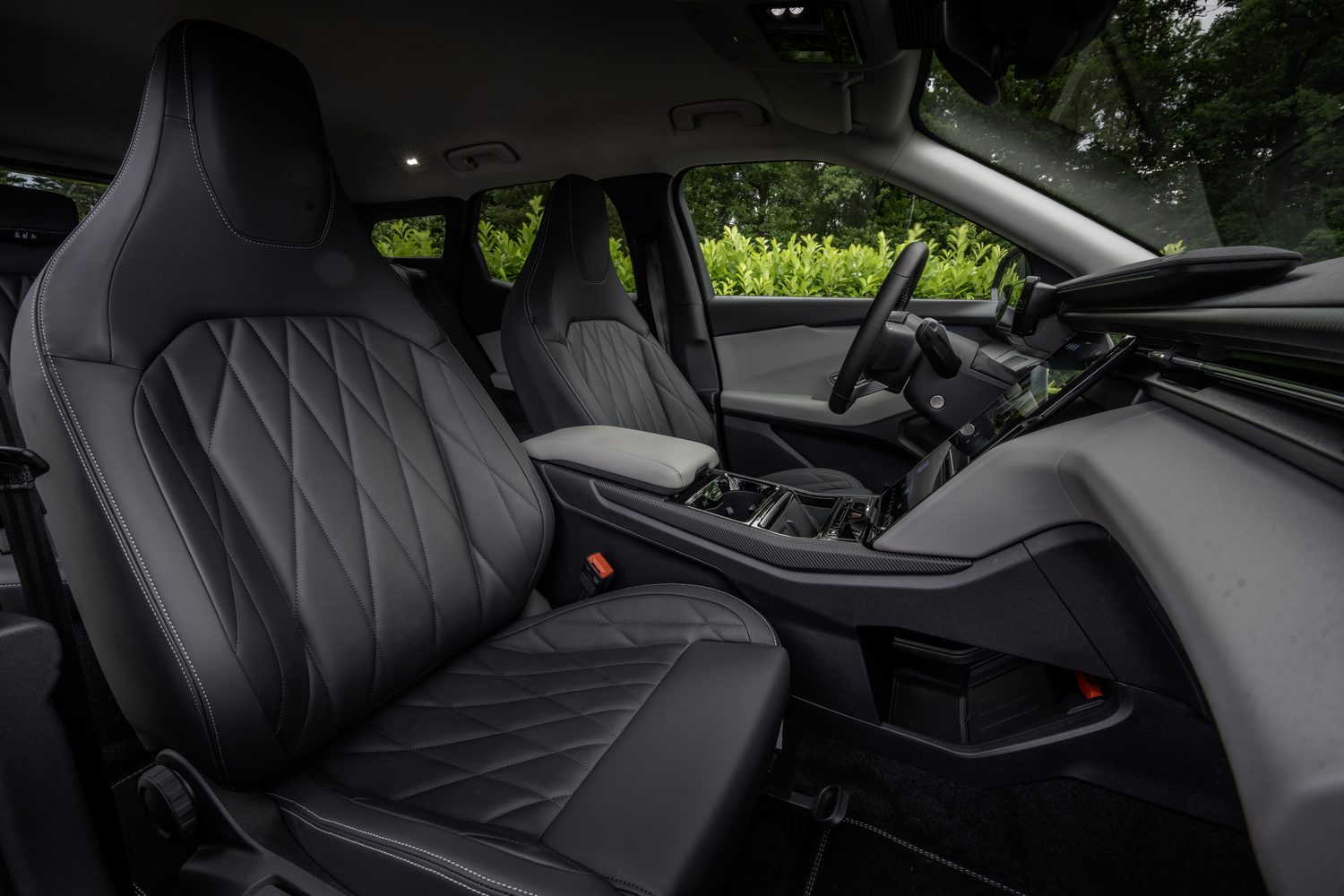
In front of the driver is a compact 5.3-inch digital display that packs in all the relevant information. Ford opts for a squarish multifunction steering wheel that uses two large haptic touchpads for media and cruise control functions. The large horizontal soundbar atop the dashboard is as much of a design feature as it is a part of the seven-speaker sound system.
As the Explorer uses the Volkswagen Group’s MEB platform for its mechanical underpinnings, there are also some familiar details inside, namely the same window and mirror function controls on the driver’s door. Ford also taps up Volkswagen for the haptic panel that controls the lights, the indicator stalks and the drive selector mounted onto the steering column.
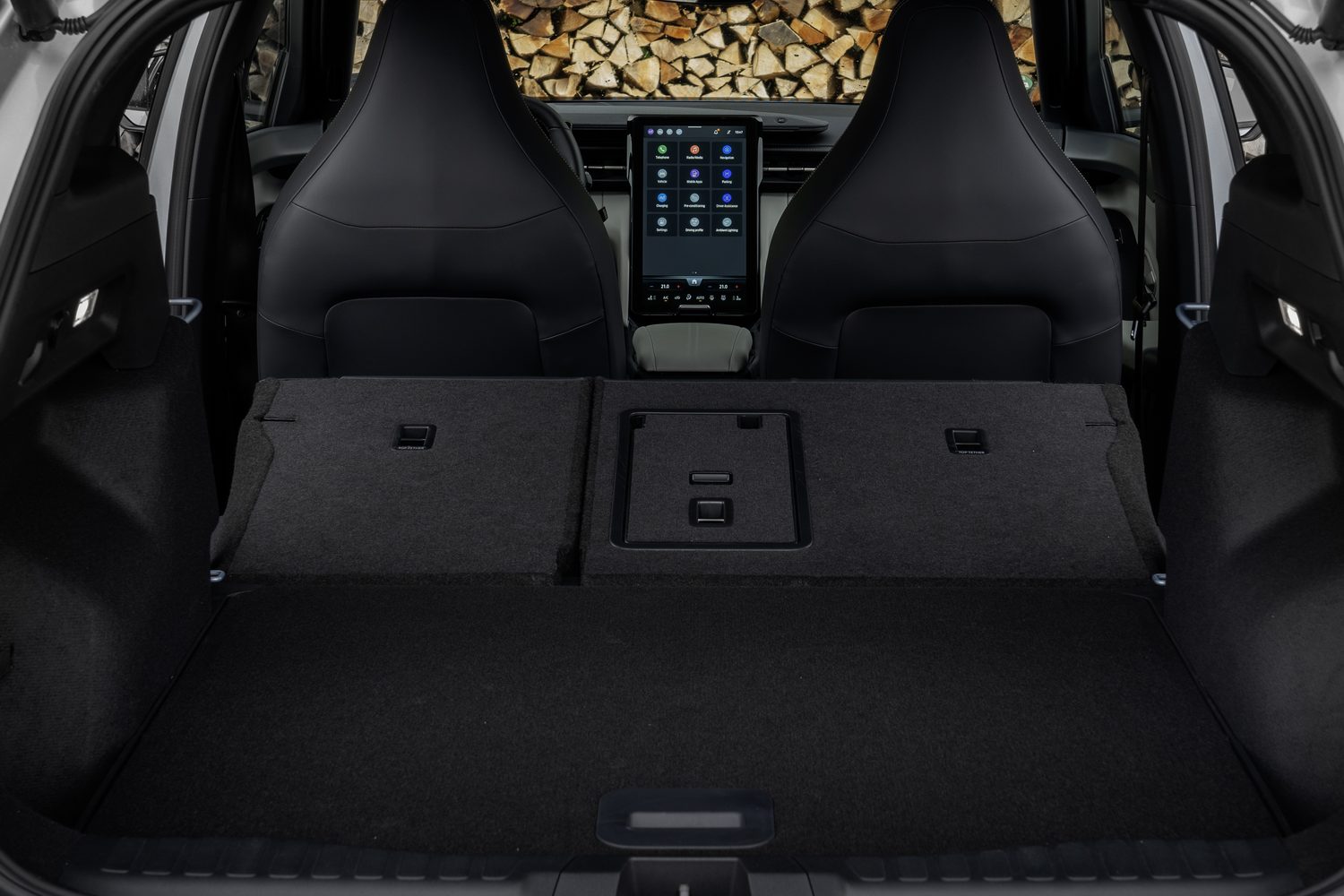
The most prominent design feature is a 14.6-inch portrait touchscreen that runs Ford’s latest (and best yet in our opinions) infotainment system. Its size means it occupies almost the entire centre console. A small nub at the screen’s base reveals its hidden party trick. Pressing it releases a lock, enabling the driver or passenger to adjust the screen’s angle by up to 30 degrees while also revealing a small hidden storage compartment. When the car is locked, this area acts as a secure locker for small oddments, and it’s also the location for the two USB-C ports.
Aft of the screen’s base is a small panel that contains haptic buttons, including a slider for the volume control. Behind that is a pair of cupholders, which lift out if not required and are stored beneath the centre console, so it doesn’t rattle around the cabin. Doing so reveals a deep 17-litre storage bin called the ‘MegaConsole’ that can accommodate everything from multiple large drinks bottles to bags and even a couple of laptops if you find the need.
Rear passengers get quite generous levels of space in terms of legroom and headroom. We like how the rear window line slopes slightly downwards as it improves visibility for smaller children while both outer rear seats have ISOFIX anchor points. We also like how the rear of the centre console (which contains vents and USB-C charge ports) doesn’t impinge on legroom for the rear middle-seat occupant - the floor in front of them is also flat. The overall quality of the materials used throughout is good and in keeping with what we have seen in other Ford models.
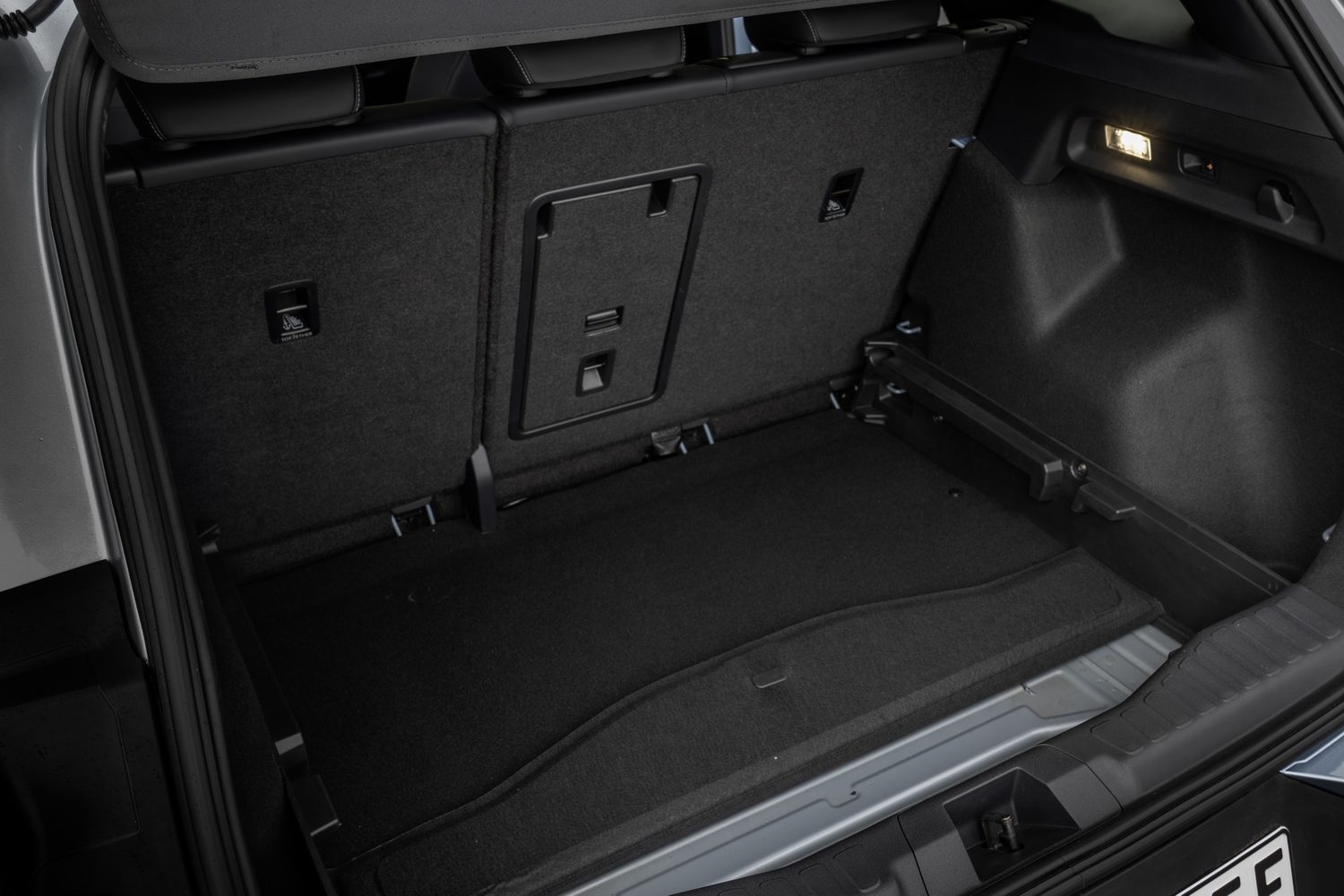
How big is the Ford Explorer?
With an overall length of 4,468mm and width of 2,063mm, the Ford Explorer fits into the C-SUV segment, one of the most popular, featuring models such as the Tesla Model Y, Skoda Enyaq, Toyota bZ4X, Renault Scenic and Volkswagen ID.4, as well as non-electric cars such as the Kia Sportage, Hyundai Tucson, Renault Austral and Toyota RAV4.
The Explorer is slightly shorter than some of those rivals, but that’s mainly due to shorter overhangs (the space ahead of the front wheels and behind the rear wheels). While that doesn’t affect the interior cabin space, it does reduce boot capacity. At 470 litres, the Explorer’s isn’t a small boot as such, but plenty of its competitors hold well over 500 litres and more than 1,500 litres when the rear seats are folded down.
Driving the Ford Explorer
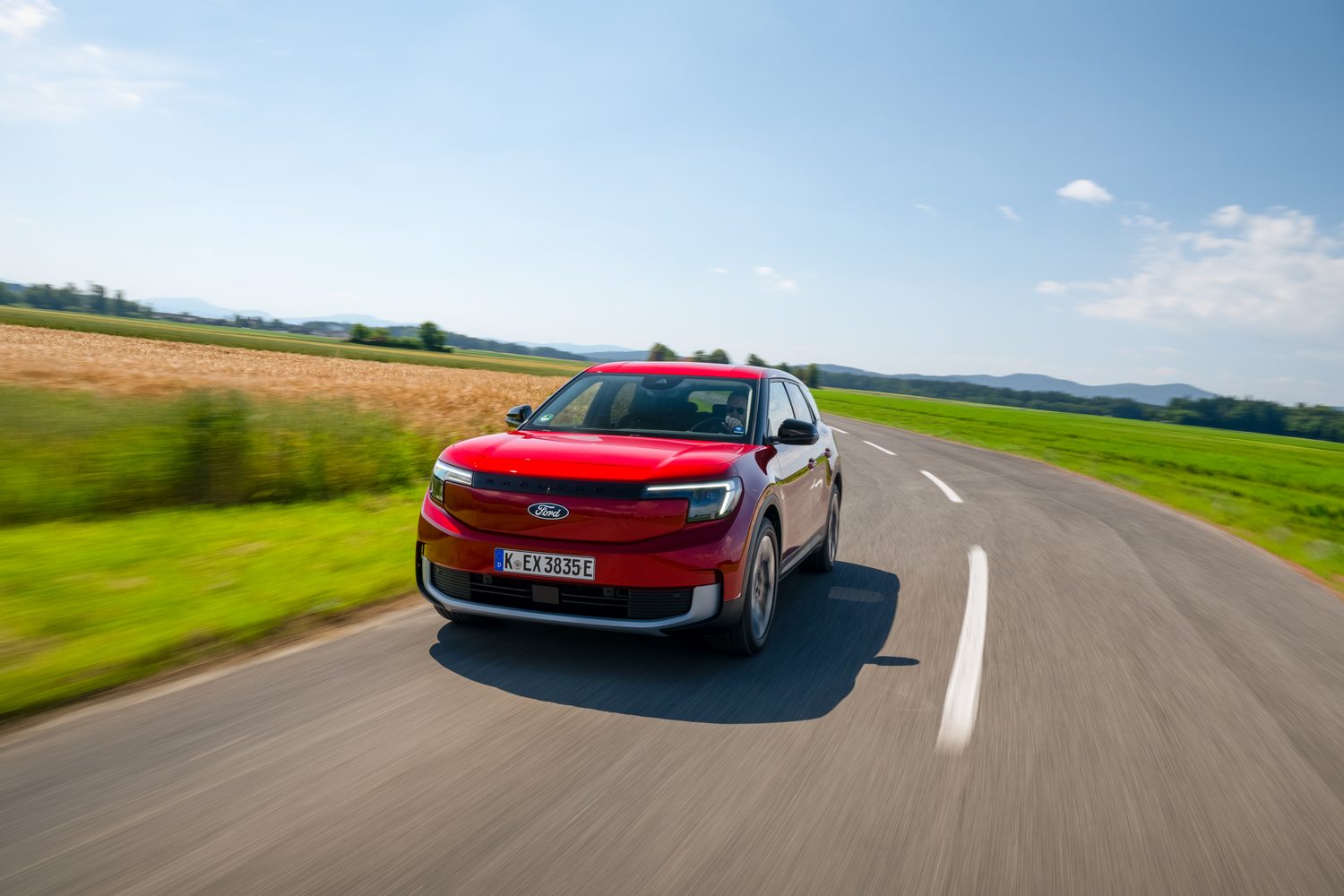
The Explorer strikes a good balance between comfort for everyday driving and a sporty feel to make it a bit of fun when the opportunity arises. That’s thanks partly to the suspension setup, which is firm but not overly so. More specifically, it’s how the car deals with bumps after initially absorbing them that gives it an edge over many rivals.
The Ford also makes it very obvious that it’s an electric vehicle, as you get the sense of how so much of its weight is set low in the car. That means it always seems planted and stable, but that weight is something you need to remember when driving as it becomes noticeable in tighter corners and when braking.
As is the case in most EVs, the Explorer makes use of brake energy recuperation when slowing down in order for the powertrain to harvest energy back into the battery. In slow-moving traffic, this is quite efficient and works well. However, you must remember that you still need to cover the brake pedal as the regeneration won’t always bring the car to a complete stop. The degree to which it slows the car can also vary depending on battery charge levels.
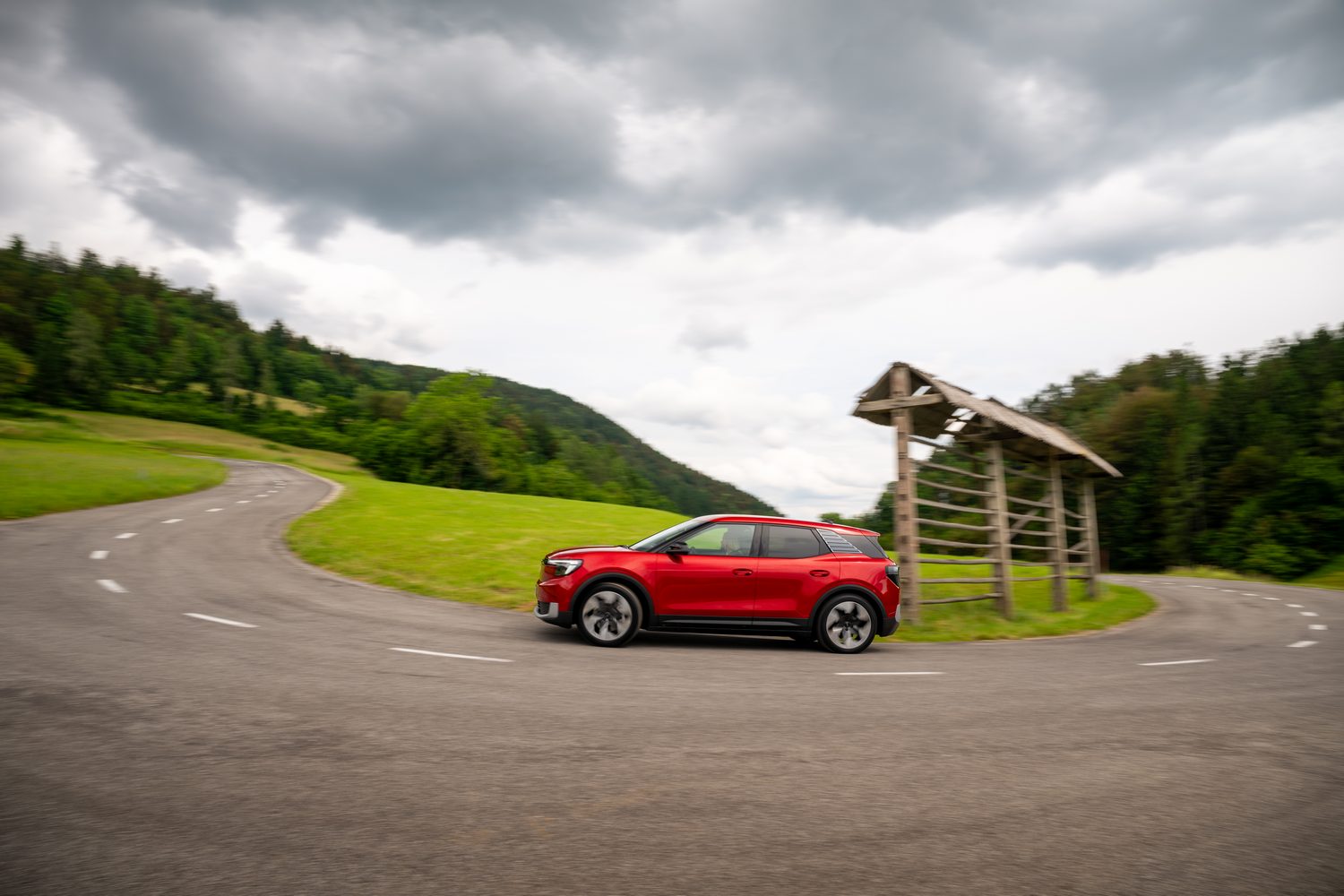
Even with the single rear-motor setup, the Explorer feels plenty quick, accelerating from 0-100km/h in 6.4 seconds. Much of that is down to the 545Nm of torque that arrives instantly from the rear axle’s electric motor. With drive coming from the rear, the Explorer feels good to drive with great poise and sweet steering. Whether on twisty back roads or long motorways, the Ford is a solid drive that feels well-made and safe.
We’ll need to spend longer in it to gauge the real-world driving range more accurately, though that is also largely dependent on the individual driver, load and conditions. The single-motor version is more efficient than the dual-motor version, so stick with the rear-wheel-drive Explorer unless you need the added power or traction the latter offers.
The Ford Explorer’s onboard technology
The Explorer gets Ford’s latest SYNC Move infotainment system, which operates within an impressive-looking 14.6-inch portrait touchscreen. Ford’s designers opted for this display orientation because it more closely resembles a smartphone’s, and they felt that it would be more intuitive for people to use. We also found that this screen orientation is good for displaying maps in the navigation system.
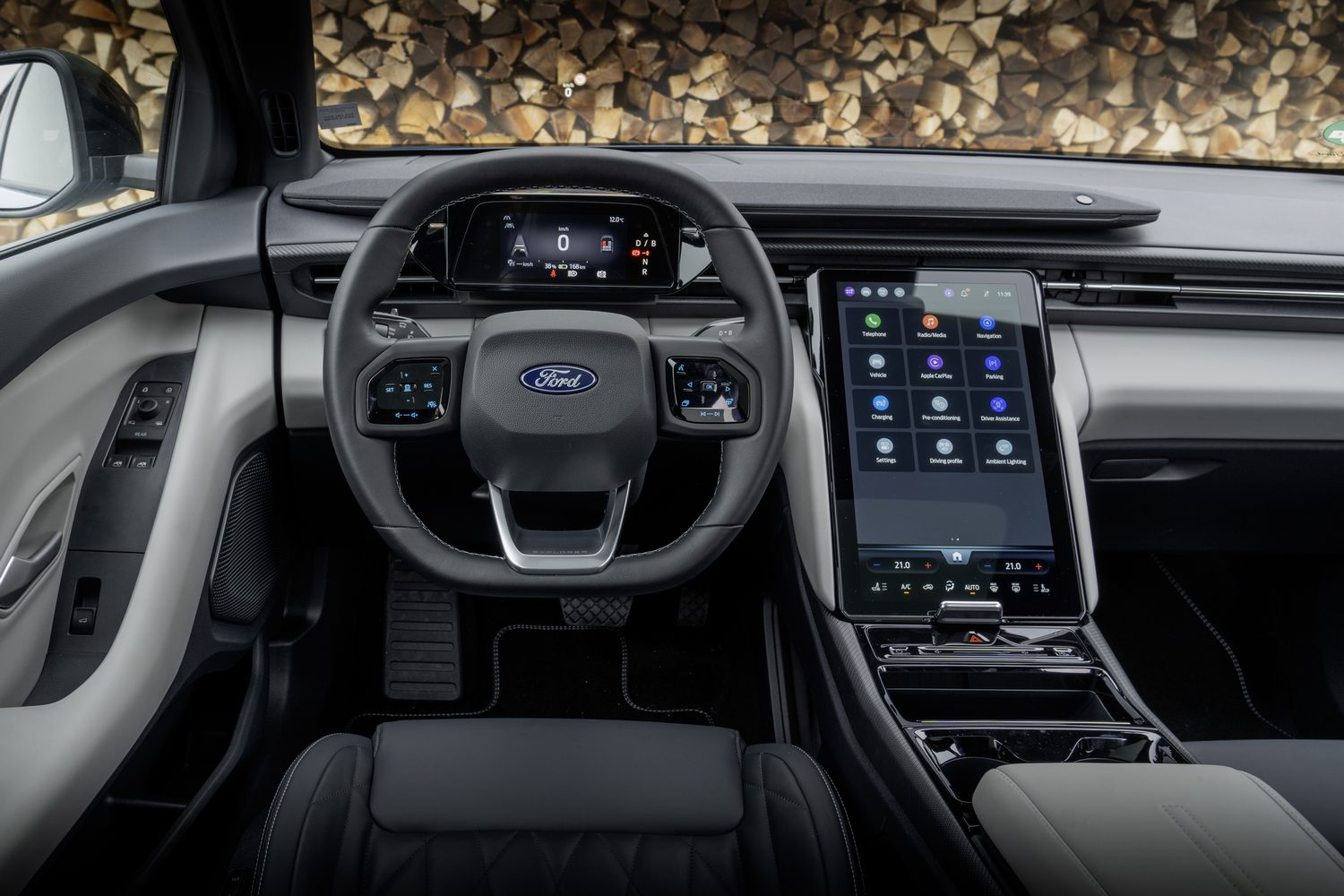
Smartphone connectivity is present not only through Bluetooth but also with Android Auto and Apple CarPlay. Keeping your device charged is easy, too, thanks to several USB-C ports and an angled wireless charging pad in the centre console.
Many of the usual driver assistance systems are available in the Ford Explorer, including an Assisted Lane Change function that helps during motorway driving at higher speeds. It’s part of a Driver Assistance Pack that features 12 ultrasonic sensors, 5 cameras and 3 radar sensors to mitigate the risk of collision at low or high speeds. Another helpful bit of tech is the Matrix LED headlights, which automatically dim sections of the road ahead so as not to dazzle other road users. This technology does work well, especially if you travel in areas that aren’t well-lit at night.
How many child seats can I fit in the Ford Explorer?
There are only two ISOFIX anchor points in the Ford Explorer, located in each of the outer rear seats, and they are easy to access. The middle seat in the rear isn’t especially wide, so attempting to fit another booster seat may be a waste of time. As we have outlined above, it’s also worth checking out the boot to ensure it can accommodate your buggy, as it is slightly below the segment average in terms of overall capacity.
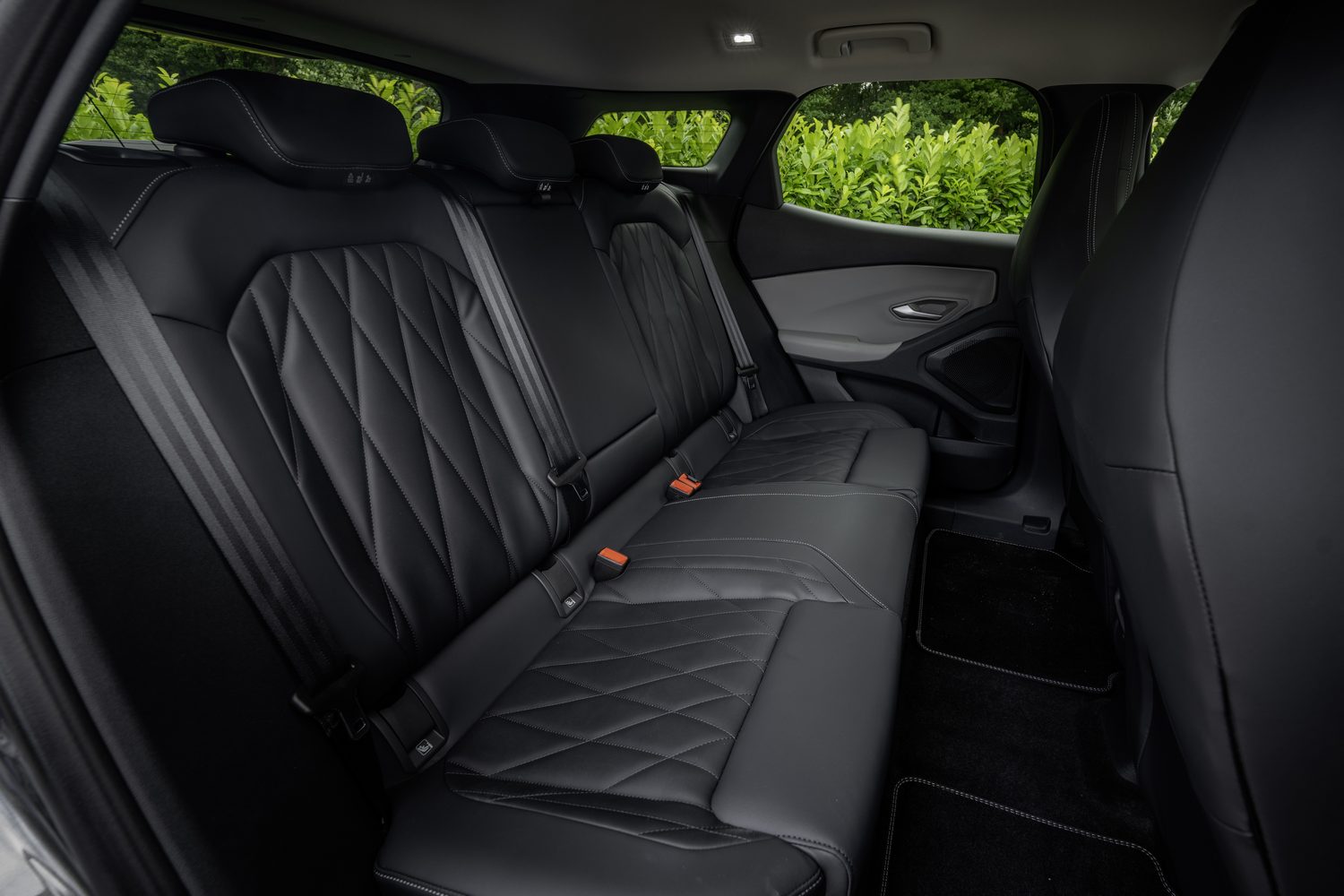
The reasons you’d buy a Ford Explorer
Image is a big part of the desirability of the Ford Explorer. It’s by no means a bad-looking car in our opinion, but when you begin to draw closer comparisons to the competition, it does lag in some areas, including space inside. The Ford does have a longer range on paper, though we don’t expect it to be significantly better or worse in the real world than other models with similar performance, such as the Skoda Enyaq and Volkswagen ID.4.
Ask us anything about the Ford Explorer
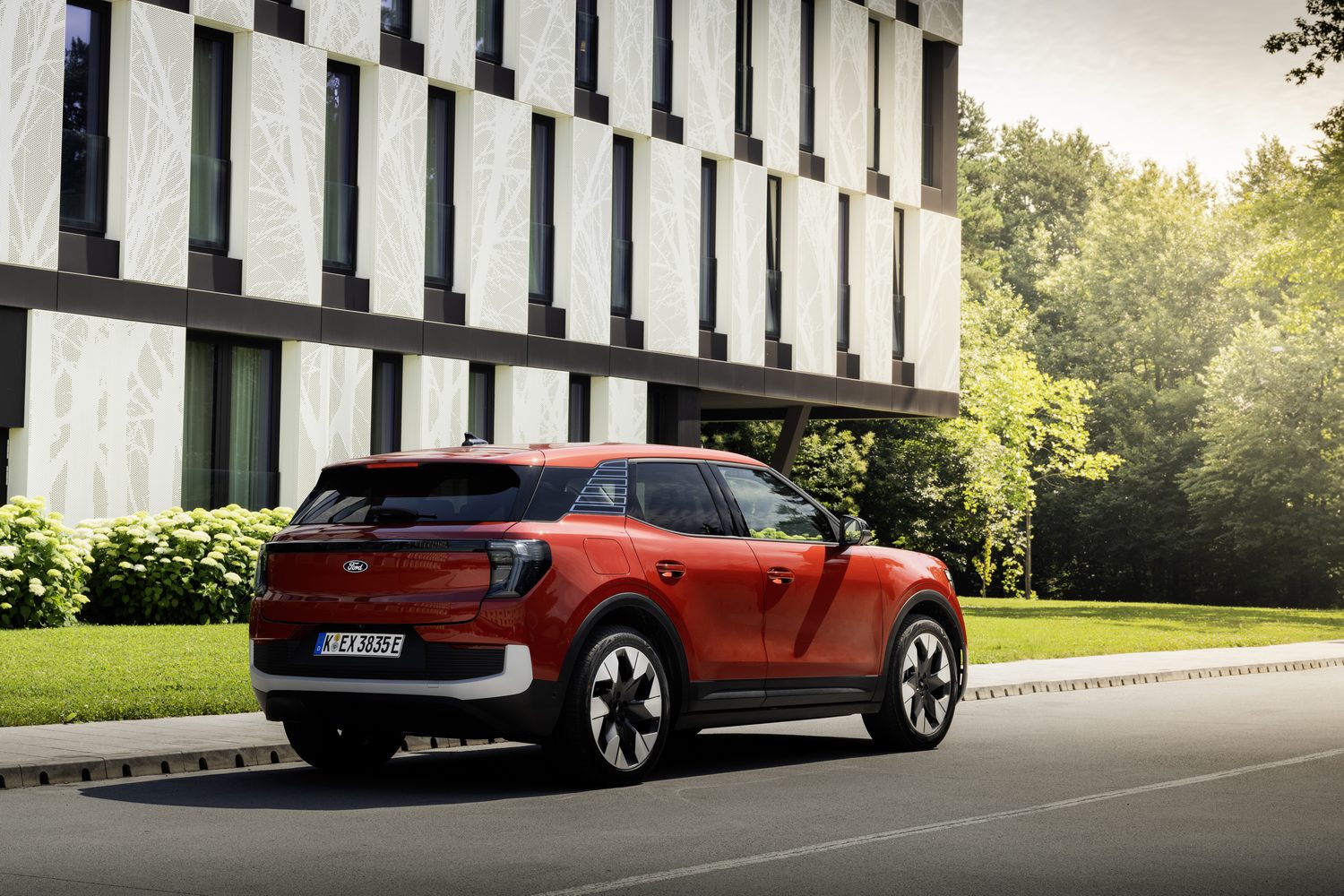
If there is something that you feel we haven’t covered on the Ford Explorer in this review, or you’d like advice on choosing between it and other cars, you can access our (completely free) expert advice service via the Ask Us Anything page.

